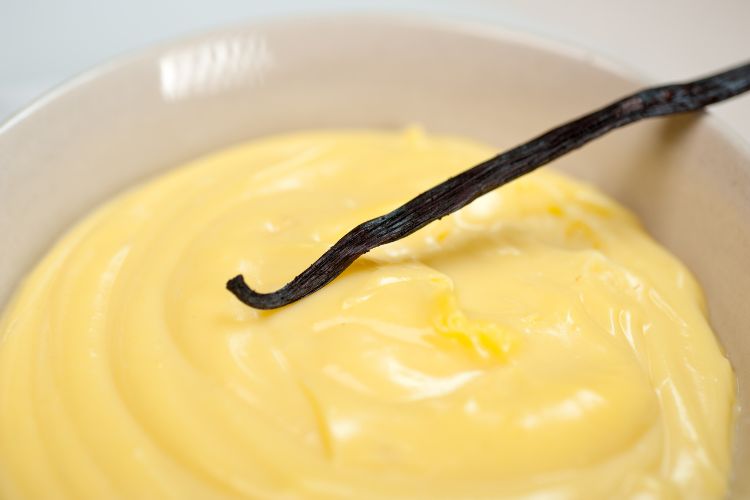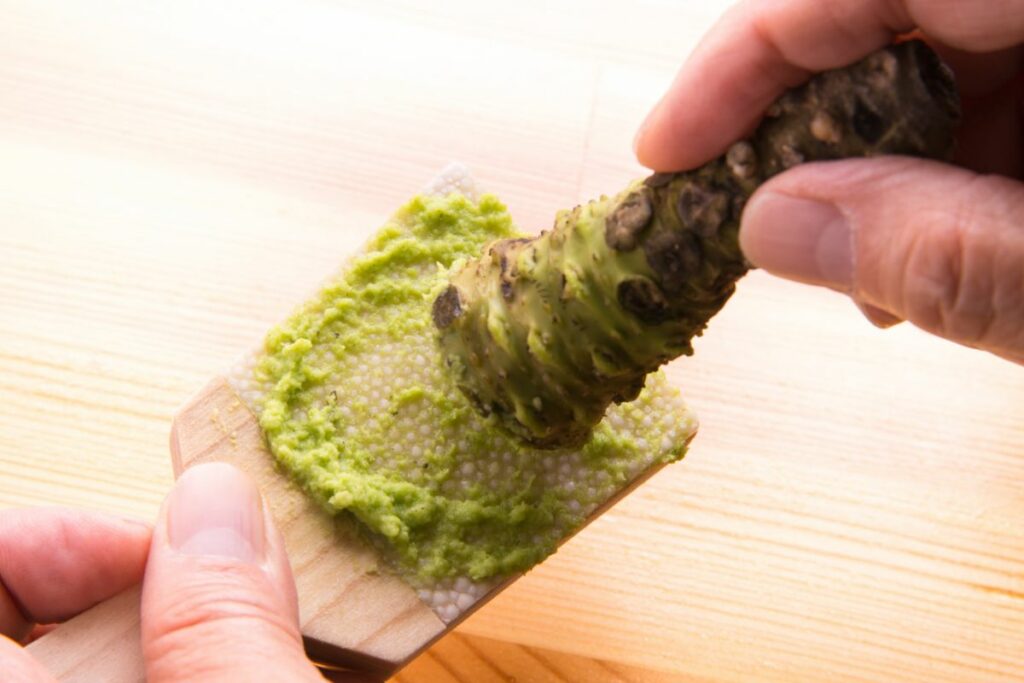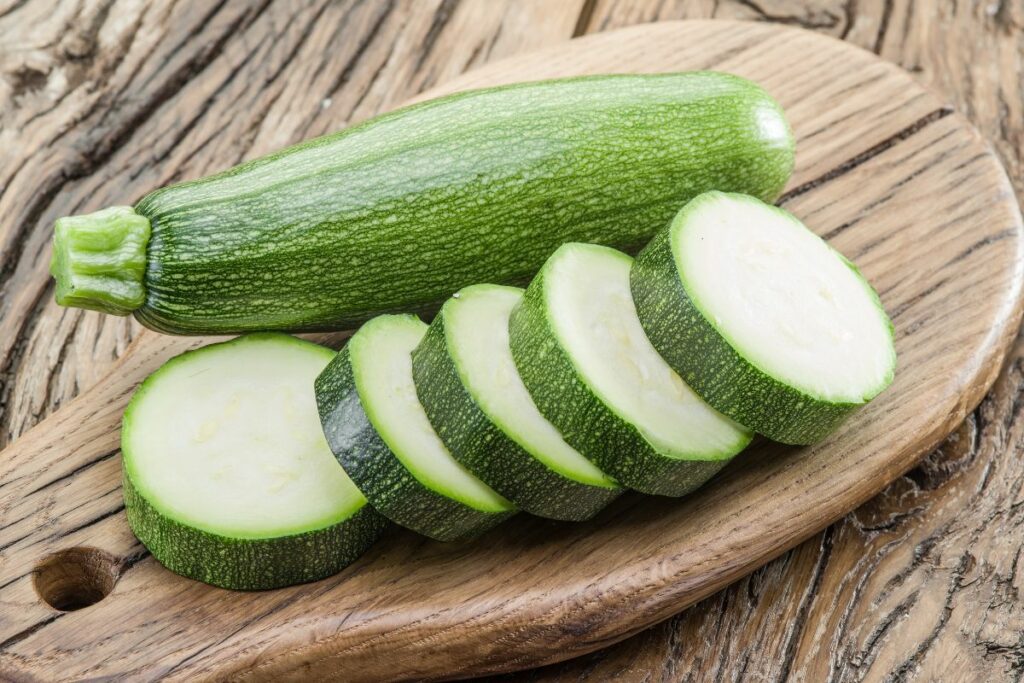Put small bowls of custard and Bavarian cream next to each other. What do you see? At first glance, they’ll look more or less the same: creamy, pale, and easily scoopable.
But that doesn’t mean they’re the same dessert.
Bavarian cream contains gelatin, while custard doesn’t. However, there are also differences in the consistency, taste, uses, and recommended serving temperatures.
If you love silky desserts but aren’t sure which recipe to try, read on! This Bavarian cream vs. custard comparison will help you decide which can best satisfy your cravings.
Bavarian Cream vs. Custard: Overview
Don’t have a lot of time for the details? Here’s a quick comparison:
| Comparison Point | Bavarian Cream | Custard |
| Main Ingredients | Egg yolks, milk, sugar, gelatin, vanilla, and cream | Eggs, milk, sugar, and vanilla |
| Consistency | Thick | Slightly runny |
| Taste | Light and creamy flavors | Rich eggy taste with warm vanilla notes |
| Serving Temperature | Chilled | Hot or chilled |
| Uses | Cake filling or as a solo dessert | Base, sauce, or solo |
| Ideal Pairings | Fresh fruit and fruit sauces | Sticky puddings and chocolate desserts |
What Is Bavarian Cream?
Bavarian cream, also known as crème Bavaroise, is an egg custard thickened with gelatin (yes, that’s jello’s star ingredient) and combined with whipped cream. It has a smooth texture and is traditionally served chilled, garnished with fresh fruit, or drizzled with a fruit sauce.
The exact origins of Bavarian cream are unclear. However, it likely originated in Germany or France sometime between the 17th and 18th centuries.
Plenty of French chefs worked in Bavaria during this period, so it is believed they possibly learned the recipe there and brought it back to France, where it became known as crème Bavaroise.
While we may never know the recipe’s precise roots, we do know that Bavarian cream filling eventually became a beloved dessert across Europe and North America. It even made its way to Dunkin Donuts treats, like the Boston Kreme donut with its chocolate glaze topping!
Some recipes refer to Bavarian cream simply as “custard,” but that’s because of the similar bases.
What Is Custard?

“Custard” is often used as a catch-all term for many creamy desserts with an egg and milk base.
However, the traditional custard is made by blending eggs, milk (or cream), and sugar. Unlike Bavarian cream, custard does not contain gelatin.
Milk and egg mixtures have been around since ancient times—maybe even as far back as ancient Rome.
Interestingly, the recipes over the years weren’t strictly sweet. Early custards may have contained meat or fish. Take, for instance, the “Crustard of Flessh” recipe. This one is made from meat bound with custard.
Over the centuries, custard evolved into a diverse family of desserts. Crème brûlée, flan, and pastry cream are all variations of classic custard base.
Bavarian Cream vs. Custard: 5 Key Differences
Now that we’ve checked out the origins of both creamy desserts, we can see how they compare in terms of ingredients, taste, texture, and versatility.
Here are five major differences to keep in mind when you’re picking a recipe for your next dessert:
1. Custard’s Main Ingredients Are Simpler
The ingredients for classic custard are relatively simple: eggs (whites and yolk), milk, sugar, and vanilla. Note that the eggs are responsible for the custard’s rich, velvety texture.
It’s also worth noting that some people use corn flour or starch to thicken their custard, but other than that, the recipe is basic and easy to follow.
Bavarian cream, on the other hand, derives its thickness from gelatin powder and heavy whipping cream instead of the coagulating proteins in egg whites. So, the ingredients list might include:
- Cold water
- Gelatin
- Egg yolks
- White sugar
- A pinch of salt
- Milk
- Vanilla
- Heavy cream
Essentially, bavarian cream is made by combining crème anglaise, gelatin, and whipped cream.
2. The Bavarian Version Has a Creamier Taste
Custard has a warm, sweet vanilla flavor with a rich eggy taste from the egg and dairy base.
Meanwhile, Bavarian cream would best be described as something between custard and buttercream.
How? Well, Bavarian cream tastes lighter and creamier than custard, thanks to the whipped cream. The classic vanilla Bavarian cream also has a sweet, buttery taste reminiscent of buttercream frosting.
3. Custard Isn’t as Thick as Bavarian Cream
The texture of custard is thick and creamy but still pourable when warm. As it cools, it firms up but remains silky smooth.
Bavarian cream recipes create an even thicker consistency, thanks to the addition of gelatin and whipped cream. The good news is that this firmer texture means it can be sliced or shaped in silicone molds.
4. Hot Custard Is a Thing
A critical difference between custard and Bavarian creme is how they’re served.
The former can be served warm/hot (freshly cooked) or chilled. It all depends on the recipe.
Conversely, the latter must be thoroughly chilled before serving (either in a glass or unmolded). After all, the gelatin requires refrigeration to set the creamy dessert!
5. Bavarian Cream Pairs Well With Fruits

A thick custard recipe shines on its own as a comforting dessert but also makes a perfect sauce. Just note that thinner versions work nicely with puddings.
The Bavarian counterpart, with a creamy consistency, can be topped with fruit and used as a standalone dessert. Alternatively, you can use it as a rich filling for pastries and layered cakes.
Final Thoughts
Now that you understand the characteristic differences between Bavarian cream and custard, from texture to preparation to ingredients, you can choose a recipe that suits your tastes.
For one, a bowl of hot custard can bring the best out of a plate of apple crumble. On the other hand, those seeking a creamy texture will favor the billowy, melt-in-your-mouth quality of chilled Bavarian cream next to some strawberry slices or fresh berries!





